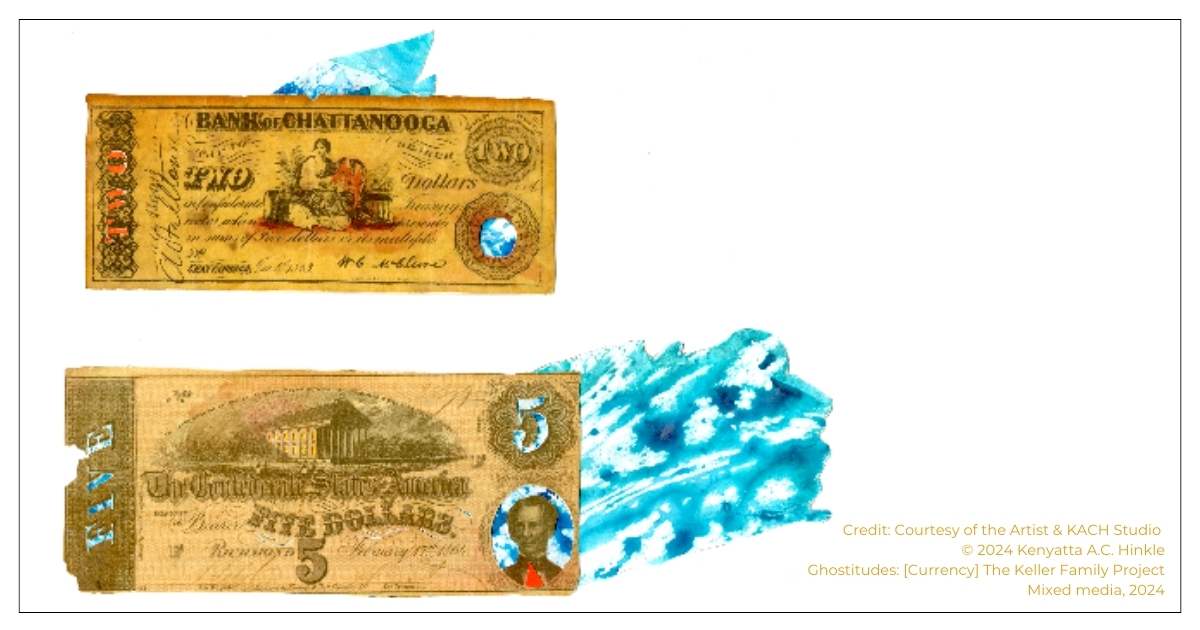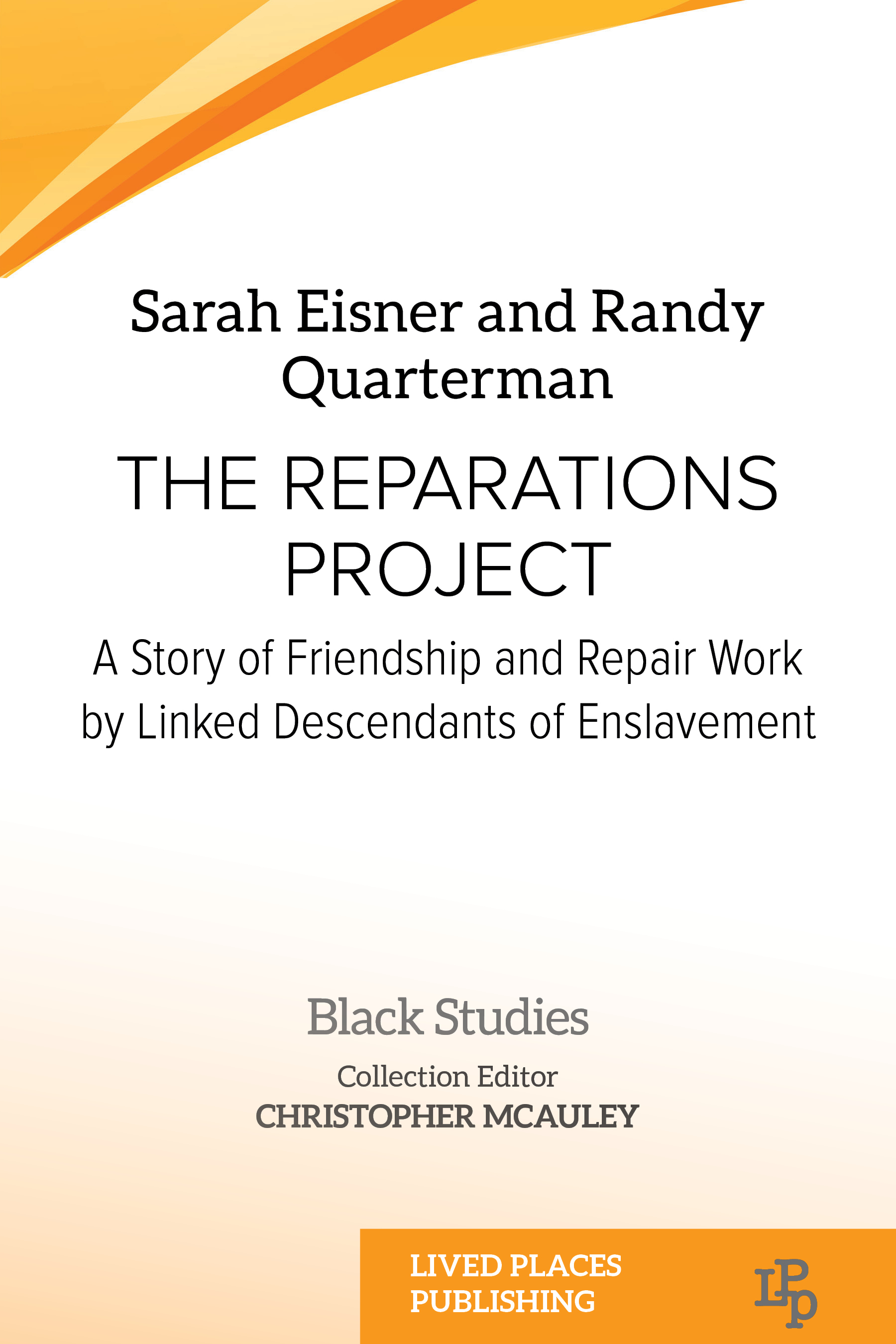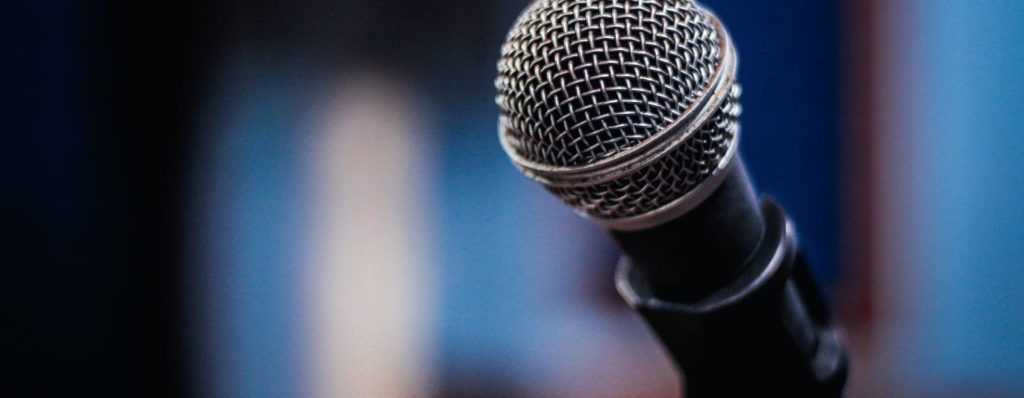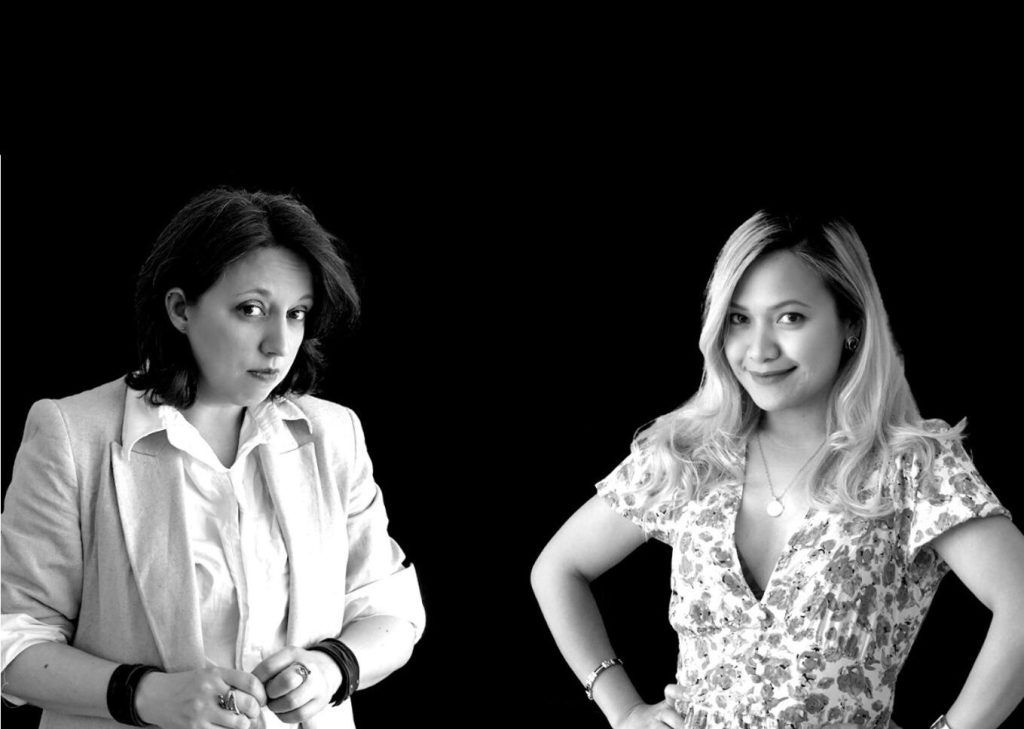by Sarah Eisner
Slavery and its legacy costs something to all Americans, though the cost to African Americans is undeniably most egregious, and with each generation we continue to pay. Southern racism and Jim Crow segregation extend throughout the country today in our neighborhoods, in our economy, in our politics and religion, and in our minds, bodies, and souls. Because white America has largely been unable to admit to this reality, and has been incapable of holding the multiple truths of our ancestors’ brutality and humanity, and perhaps our own, at the same time, this cognitive dissonance shows up in our white minds, bodies, and souls in a particular way. Before I became friends with and worked with Randy, work that began as my attempt to offer repair to his family, I was carrying a lot of white shame and anger about mine.

Cognitive dissonance is generally defined as the mental space of discomfort, angst, guilt or shame associated with one’s actions or decisions being in conflict with one’s values or who one believes oneself to be. Shame is the universal feeling that something may be wrong with us or a group we are part of; of not being good enough, or worthy. It is different than the guilt one feels for doing or not doing something, and shame can and often is present even when one has not personally done anything wrong. Studies show only sociopaths don’t feel it. And there are some things we should feel shame about. Shame is a crossroads. It can paralyze us or transform us and lead us toward truth. Moving through it can heal us, prevent us from hurting others, and prevent us from passing shame down the line. We can even offer up artifacts of shame, once hidden away in closets, to be transformed into beautiful art, like the confederate bills my mother inherited, then turned over to the artist Kenyatta Hinkle, a Black woman, to contextualize. But what happens when we don’t move through it?
My family, like most families, is large and varied. There’s the Swiss side, my father’s, and then there’s my mother’s side. Her father was a damyankee, from Illinois, with ancestors who fought for the North. On her mother’s side, all the way back to 1780, there’s really only one side: Keller. This is the side of my family that I know and feel connected to. My Keller ancestors enslaved dozens of humans in South Carolina and Georgia, including Randy’s ancestors, Zeike and Grace Quarterman. These Kellers also considered themselves patriots and “good white christians”. Certainly they were patriots–white christian nationalists–at least to their southern nation, though they were traitors to the United States, evidenced by their fight and ranks within the Confederate army.
It is also true that there are many ways in which they were “good”, even though, for a long time, I couldn’t accept that. I couldn’t hold the idea that one could enslave others and also be human themselves. So I demonized them. It was Randy who reminded me that in denying my ancestors’ humanity, I lost a bit of my humanity as well. I stayed stuck in shame.
Through recorded oral histories and diaries, and from some personal experience, I know that, as a group, my ancestors loved one another, established churches and served entire lives as church leaders, had relationships of joy and kindness with both Black and white folks, and claimed to love at least some of the people they kept in bondage and servitude. They deeded (gave) land to some formerly enslaved families, paid wages to tenant farmers, and left money and land to Black servants in their wills. They buried Black people in the (white) family cemetery and held them in “positions of honor” during enslavement, all complicated claims. It is also true that some of these same ancestors of mine were known to have treated Black people as subhuman, even as pets, and as time went on, all of them dutifully complied with the laws of Jim Crow and strict segregation, whether they recognized its evil or not. The cognitive dissonance must have been deafening.
On White Shame
“White Shame,” as Dr. Corinne Galgay explains in an interview with Psychology Today, “can be motivating when it is named, acknowledged, and processed prior to overwhelming our coping resources. It may be channeled to strengthen anti-racism efforts. Sadly, it can also further White silence, susceptibility to colorblindness, and mood disturbances.”
When she was in second grade, my mother came home from school to find her mother, my grandmother, sitting at the kitchen table staring blankly at the wall. “Mother is having trouble making decisions,” my grandfather explained as the sharp sound of ambulance sirens reached my mother’s ears. My grandmother, who had been raised on Drakies Plantation, who always seemed “nervous” and eager to please, who had devoted her life to Jesus and Jimmy Carter’s progressive policies, who taught special education to both white and (eventually) Black children and worried over the well-being of Lucy, the “Help” who had “been given” to her grandmother as a wedding gift and worked her entire life without pay for our family – Lucy, who had no education or family of her own–was taken to the hospital and treated with electroshock therapy for a few months, while my mother stayed with a relative in a house on a different former family plantation outside of Savannah. My mother couldn’t stay with her mother’s mother on Drakies, because she had been committed to a different asylum, the infamous Milledgeville, at the same time, as a result of a breakdown. It was not my great-grandmother’s first visit there. Her brother had also been committed there. Elsewhere, her sister, her brother’s daughter, her daughter. And on down the line.
As Lillian Smith writes in her 1948 book, “Killers of the Dream” about coming of age as a child in southern segregation: “The mother who taught me what I know of tenderness and love and compassion taught me also the bleak rituals of keeping Negroes in their “place”…They who so gravely taught me to split my body from my mind and both from my “soul,” taught me also to split my conscience from my acts and Christianity from southern tradition.”
What does it take for a body to split from a mind and for both to split from a soul? What happens when they do?
The Keller Curse
In my family, we called the mental illness that was passed down the line “The Keller Curse”. “The Curse” showed up as severe depression and suicide. It resulted in treatments of the infamous Milledgeville Asylum’s Georgia Cocktail. In a fatal self-inflicted 22 caliber rifle shot to the brain during an accident in the barn while “hunting rats”. In a suicide on the Meinhard train tracks by way of the 50-foot Central of Georgia Railway boxcar painted black with a big aluminum oval nicknamed the “blimp”. In an intentional overdose. And in so many prescriptions to antidepressants to keep the sickness at bay.
“The Keller Curse” was chalked up to unlucky genetics and inbreeding. I do not discount genetics, or epigenetics, where mental illness is concerned. And the inbreeding is certainly true. I also believe that my family members suffered because they were not able to successfully soothe the cognitive dissonance of living as good humans–or wanting to–while living in a violent society that dehumanized others as inferior, and thus dehumanized everyone. Epigenetics likely carried this trauma through to me, too.
White Americans have largely been silent or ignorant about the cognitive dissonance we live with, both today and passed down through our DNA, and the way it causes so much shame. Unprocessed and misunderstood, this shame can show up as depression and paralyzing pain. Discussing the mental health harm done to white folks by white supremacy can feel shameful itself, especially when a privileged white woman like me is talking about it, sort of like asking for empathy over a self-inflicted wound. But it is not self-inflicted. “America has lied to her white children for centuries,” Heather McGhee writes In her 2022 book The Sum of Us: What Racism Costs Everyone and How We Can Prosper Together, “offering them songs about freedom instead of the liberation of truth.”
My mother says that as a child growing up in segregation, she did not recognize its evil, even as she watched it play out. She was enveloped completely in its bubble of silence and lies. Only in retrospect can my mother see the horror of the system they lived in, and speculate on the splitting of her mother’s heart and mind. Only because she is able to admit to the truth of history and has done the emotional work of naming what feels shameful about it, though she was not guilty of anything as a child, was she able to move through it. My ancestors didn’t get that far. I think my mother has moved as far as she has because of the work Randy and I have done. I know I have moved through my shame thanks to the work I do with Randy. His support helped me dig deeper into the truths of our history. It would have been unfair of me to ask Randy to give me this support of course, and yet he gave it willingly. His empathy helped me hold multiple truths at once.
The white American spiritual and moral crisis that has resulted from the lies McGhee highlights is one in which we have been taught to feel both superior to others and never quite pure enough for God, or good enough for ourselves. It is one in which we have been taught to believe we are free to be good, while also being constrained to participate in a system that dehumanizes others. It is one of white shame.
Continution of Crisis
As I write this sentence, sitting in my home in California, a News alert comes through to tell me that Donald Trump has just questioned Vice President Kamala Harris’ Blackness while being interviewed by a Black woman at a conference for Black journalists. This follows other recent news of his running mate, Vice Presidential hopeful JD Vance, having called Mrs. Harris a miserable childless cat lady and warning that people who do not have biological children of their own should not be allowed to vote.This follows incident after incident of these same leaders and other leaders categorizing non-white immigrants as murderers and rapists in the service of thinly veiled White Christian Nationalism. All of this happens, and keeps happening, even as Mr. Trump has been found guilty by various juries of fraud and sexual assault. What Trump has not done is ever shown an ounce of shame.
“I began to know that people who talked of love and children did not mean it,” Smith wrote in 1948. “That is a hard thing for a child to learn…Something was wrong with a world that tells you that love is good and people are important and then forces you to deny love and to humiliate people.”
What does Trump’s presidency and resurgent popularity, and the rise of White Christian Nationalism reveal? How loud is the cognitive dissonance for humans who believe themselves to be good – who are good – and who still vote for the white supremacist demagogues of today?
For those who are parents, I am sure they are teaching their children what they know about empathy, care, and love. They are loving their children. They are also voting for leaders who demonize diversity and inclusion efforts, who champion obliterating civil rights and call non-white human beings animals, who push for banning books and insist on hiding the very history of slavery and segregation, and the harm that it has done to all of us. One attempt to soothe this dissonance is the popular claim that they are saving their children from indoctrination that might make them turn against their ancestors, their country, their race, and their god, or at the very least, cause them to feel guilt, or shame. But is it possible that they are instead harming themselves and their children, not to mention others who suffer from the demagogues’ rhetoric and laws?
I credit my mother for telling me her truths and encouraging me to know more and to speak up. For me, looking at our history and telling it publicly has been the opposite of taking on white shame or guilt. It helped me move through it. I believe my life will have been well lived if I have done the same for my children, and maybe even others; if I have helped them recognize white shame and move through it with the knowledge that they are good enough and worthy, but not superior. If I can prevent some of this silence and sickness from being passed down the line.
How can a Black man and white woman, linked by ancestries in enslavement, use their uniquely different pasts to create space for a common reparative path toward the future?
- READ: The Reparations Project: A Story of Friendship and Repair Work by Linked Descendants of Enslavement by Sarah Eisner & Randy Quarterman
 In 2019, Sarah Eisner contacted Randy Quarterman, the great-great-great-grandson of a man her great-great-great-grandfather had enslaved. Building a friendship allowed them to rediscover their family histories and reckon with their own life paths, which diverged and dovetailed to ultimately lead them back to Savannah, Georgia.
In 2019, Sarah Eisner contacted Randy Quarterman, the great-great-great-grandson of a man her great-great-great-grandfather had enslaved. Building a friendship allowed them to rediscover their family histories and reckon with their own life paths, which diverged and dovetailed to ultimately lead them back to Savannah, Georgia.
Together, they worked to preserve a plot of land deeded from Keller to Quarterman in 1890, which was still held by the Quarterman family but in danger of being taken by eminent domain. The two created The Quarterman & Keller Foundation and The Reparations Project with the goals of supporting Black education, Black land preservation, and Black art. A story of a challenging, close, and mutually healing friendship, this book is ideal reading for students of Black Studies, History, Civil Rights, Cultural Anthropology, Sociology, History, and Politics.
We want our books to be available to as many people as possible. If you’d like to purchase an individual copy, please email us and we’ll give you a discount code:
HEADER IMAGE CREDIT: Courtesy of Harriet Lee (Sarah’s mother)



